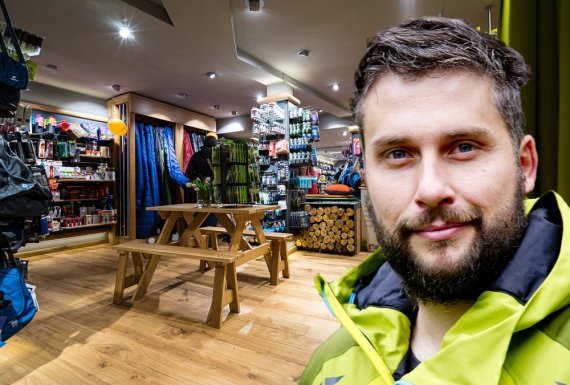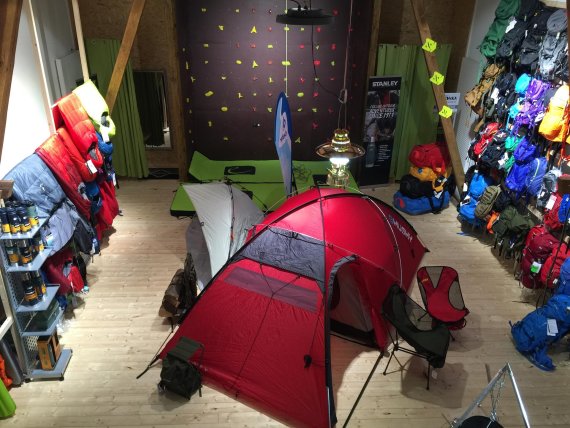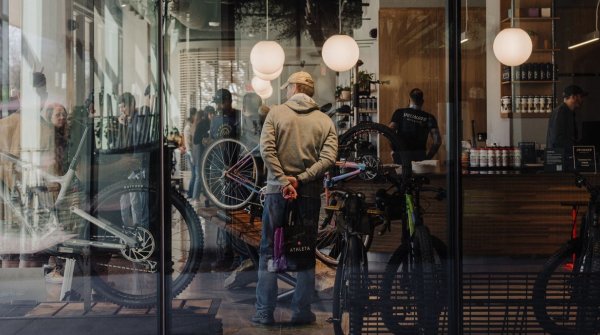
The outdoor professionals are organized under the umbrella of Sport 2000 and have around 110 affiliated dealers and 150 stores.
In an interview with ISPO.com, Wahnel talks about winners and losers on the market and the changing conditions in a business in transition.

ISPO.com: After difficult recent years, the outdoor segment seems to be recovering in 2016. How do you think the industry is doing?
Tim Wahnel: First of all, it's clear: The hype, the peak of which was reached with the cold winter of 2010, is long gone. There are a number of factors that influence the development of our figures: Are there brands that are making the move out of the core target group and into the mainstream? Is the weather making people want to go outdoors? Does the average person have a weather-related need for outdoor articles? How many market players are there and how competitive are they?
The fact is that the outdoor theme - with its various facets of physical exertion and enjoyment, cultural experience, health and recreation, and lifestyle - continues to be popular. The specialized retail trade serves a very heterogeneous clientele under the heading of outdoor, whose interest in the subject area continues.
The end of the mainstream?
Who are the winners and losers in the market?
On the losing side are certainly those suppliers who have sacrificed their distribution profile "for the quick mark" in the trend business and who are currently having to deal with the consequences of this unsustainable action.
In the course of the declining mainstream business - the hardshell jacket is currently not the first choice on the way to the bakery in the morning - less high-profile me-too retailers are also losing out or have already left the market.
Consultancy-intensive themes such as shoes, pants and the entire hard goods sector are currently providing a significantly larger share of sales than they did some time ago. Textile continues to lose - also and especially because of the extreme short-livedness of the collections and the inadequate distribution of risk between retail and industry. But the growth in hard goods is by no means a reason to cheer. Almost all colleagues are reporting declining customer frequencies, and the retail share of our suppliers is also de facto clearly costing retailers sales.
What is the relationship between online and stationary retail?
The online share is growing, but no longer at the rates of recent years. However, the lion's share of sales is clearly still in the stationary sector. And in the stores, it is apparent that, despite the declining frequency, almost similar sales can be generated as in previous seasons. So the customers who come into the stores are also buying. What's missing are the strollers, the information seekers.
Digitization as a challenge
The topic of click & collect is on everyone's lips. What progress has been made here so far?
A lot of attention is currently being paid to efforts to show digitally searching end consumers the availability of goods in their vicinity.
The number of people who obtain information online before making a purchase is immense, and the number of pre-informed customers in our areas has grown significantly.
The approach of Click & Collect, i.e. involving local retail partners in online sales generated via the manufacturer's homepage, is commendable. The number of customers who choose this route to the goods is, of course, many times lower than the number of online customers who choose the classic shipping route.

Fair suppliers have the edge
What is the current situation regarding pressure on regular prices, also against the background of competition with online stores?
The price pressure is still extreme. The hipper a brand is, the more likely it is to come under the scrutiny of online discounters. After all, it's always the usual suspects who turn the price screw early in the season. The declining popularity of the outdoor theme in the mainstream market provides a little reassurance - many generalists, department stores and merchandise distributors from outside the sector have withdrawn from the business again.
Nevertheless, the issue of price stability and distribution structure plays an immense role for our retailers - we rely on sell-through margins and do not live on input margins. A look at our supplier statistics clearly shows that those industry partners are given budgets by our colleagues who behave as fair partners. The supplier statistics therefore also include a large number of brands far removed from the mainstream among the top 20.
These are the top suppliers of outdoor professionals in the first half of 2016
Brand January - June 2016 January - June 2015 Fjällräven 1 1 Meindl 2 3 Deuter 3 2 Vaude 4 4 Lowa 5 6 Icebreaker 6 7 Hanwag 7 9 Mammut 8 5 Tatonka 9 8 Ortlieb 10 14About the weather: Was 2016 so far a special year in the meteorological sense?
Counter question: What is actually the perfect outdoor weather? Cold, warm, rainy, changeable? And what good is this weather if the seasonal cycles no longer match it? No sooner are the temperatures above 25 degrees than one encounters the first references to shorts on sale. And it's even worse in winter, which in many places doesn't begin until after Christmas - in other words, precisely when retailers are making room for summer merchandise with their red pencils. A rethink is urgently needed here.
In any case, in 2016 the weather once again had more influence on our industry than the economy: the beginning of the year was too warm in any case - the big vouchers with warm jackets were accordingly lacking and the warehouses remained full. Otherwise, the weather was mostly mixed. This is always an advantage for our textile departments, when even light insulation pieces sometimes go over the counter.
What is the current situation regarding pressure from suppliers? Where are the thumbscrews being put on the trade?
A lot is happening on the market at the moment. The traditional is being reconsidered, and new things are being tried out. There is an incredible amount of merchandise from a large number of brands, many of which are interchangeable. This enables our colleagues to check exactly with whom one forms rope teams and why.
Manufacturers, too, are now often acting not only on the basis of pure order volumes, but also with a view to market share at the individual location and the quality of the local retailer.
 Sports BusinessThe future of the bike industry: 6 innovative bike stores
Sports BusinessThe future of the bike industry: 6 innovative bike stores
- ISPO awards
- Mountain sports
- Bike
- Design
- Retail
- Fitness
- Health
- ISPO Job Market
- ISPO Munich
- ISPO Shanghai
- Running
- Brands
- Sustainability
- Olympia
- OutDoor
- Promotion
- Sports Business
- ISPO Textrends
- Triathlon
- Water sports
- Winter sports
- eSports
- SportsTech
- OutDoor by ISPO
- Heroes
- Transformation
- Sport Fashion
- Urban Culture
- Challenges of a CEO
- Trade fairs
- Sports
- Find the Balance
- Product reviews
- Newsletter Exclusive Area
- Magazine





